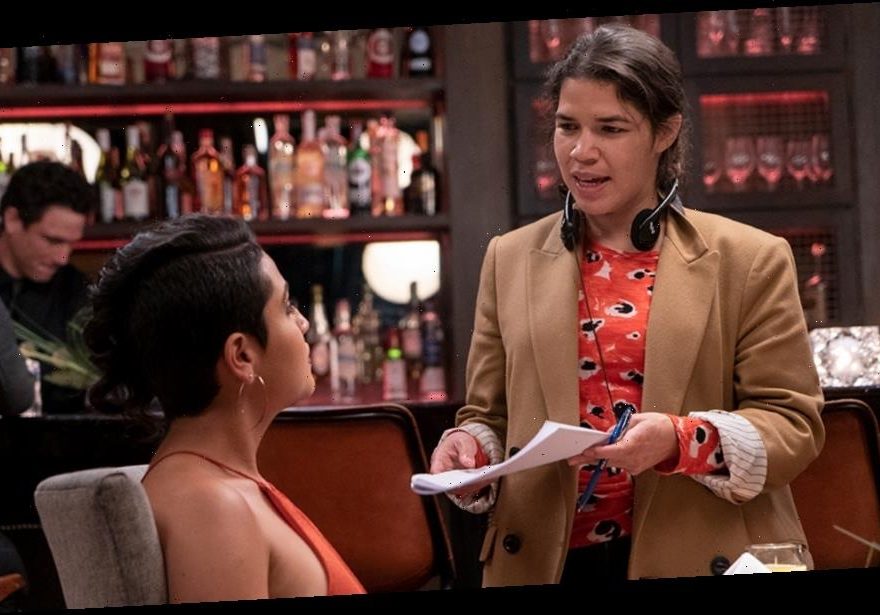Few can argue that Latinos haven’t been greatly underrepresented in Hollywood, particularly at the creative level. A key reason, many say, is an insufficient comprehension of what the terms “Latino” and the gender-neutral “Latinx” mean.
When Hollywood thinks about Latino or Latinx talent, its instinct is to turn to the Oscar-winning Mexican directors Alfonso Cuarón, Alejandro G. Iñárritu and Guillermo del Toro or to acclaimed Spaniards such as Pedro Almodóvar as mistaken examples of inclusion. Most would have a difficult time naming an American Latino filmmaker besides Robert Rodriguez or creatives other than Jennifer Lopez and Eva Longoria.
Such a superficial grasp of the distinct groups of people included in the ethnic terms “Latino” and “Latinx” has led to the perpetual omission of U.S.-born-and-raised Latinos in front of and behind the camera. Their experiences are either entirely ignored or lumped together with those of their Latin American counterparts, disregarding their unique stories and struggles as Americans with Latino heritage — such as limited access to higher education and a lack of government
funding for cinema.
“The industry doesn’t understand where U.S. Latinx filmmakers and talent fit in,” says Diana Peralta, an Afro-Latina, Dominican American writer-director, whose film “De Lo Mio” was recently acquired by HBO. “We’re not ‘Latin’ enough, but we’re not ‘American’ enough for them either. It’s the common ‘ni de aquí, ni de allá’ [neither from here nor from there] problem.
A report last year by the USC Annenberg School for Communication and Journalism, titled “Latinos in Film: Erasure on Screen & Behind the Camera Across 1,200 Popular Movies,” noted that among the 4% of films with a Latin American or U.S. Latino director between 2007 and 2018, only one was helmed by a woman: Mexican-born Patricia Riggen. Since the study was released, two American-born Latinas have led major productions. Melina Matsoukas, who identifies as Afro-Latina, directed “Queen & Slim” at Universal, and Roxann Dawson directed the Christian drama “Breakthrough” for Fox.
“We’re all thrown into these umbrella labels that fail to capture our complex histories of colonialism and racial oppression and how that’s impacted who has access to this industry and who doesn’t,” says Aurora Guerrero, a queer-identifying Chicana director whose debut feature, “Mosquita y Mari,” premiered at Sundance in 2012. “It’s time we have conversations about these differences, and it’s time they are taken seriously.”
Recent shows like “One Day at a Time,” “Gentefied,” “Vida” and “The Casagrandes” have laid the groundwork for a wave of U.S. Latinx content on the small screen, but wide and diverse representation remains distant.
Asked how the recent success of Mexican filmmakers at the Oscars affects opportunities afforded American Latinos, Peralta says that while it gives mainstream visibility to the community as a whole, U.S. Latinx directors haven’t significantly benefited from that awareness.
Guerrero says Latin American filmmakers have a different perspective from U.S. Latinx creatives. “Their stories and their rise to success don’t address the historical exclusion of U.S.-raised Latina filmmakers,” she says. She hopes those who have attained a measure of mainstream recognition use their platform to call attention to the exclusion of Black and Brown U.S. Latinas.
Guerrero is in charge of outreach at the newly launched initiative Latinx Directors, a free website founded by filmmakers Joel Novoa, Alberto Belli and Diego Velasco. Weary of studios and executives claiming to have difficulty finding Latinx creators, the group has built a site including more than 135 Latinx directors (both American Latinos and Latin Americans working in the U.S.).
“By grouping everyone from diverse Latinx backgrounds in the site, and also enabling users to filter by heritage, self- identification and level of experience, we will become stronger and more specific while at the same time tearing down stereotypes,” says Novoa. “We wanted to show that there is a huge community of talented Latinx directors from diverse worlds and experiences out there.”
In allowing those in positions of power to search the growing and highly detailed database of Latinx storytellers, the hope
is not only to see more get hired for a variety of projects, but for the ongoing conversations on representation to address all of the nuances of the culture — because when it comes to Latinos, one size doesn’t fit all.
Source: Read Full Article
